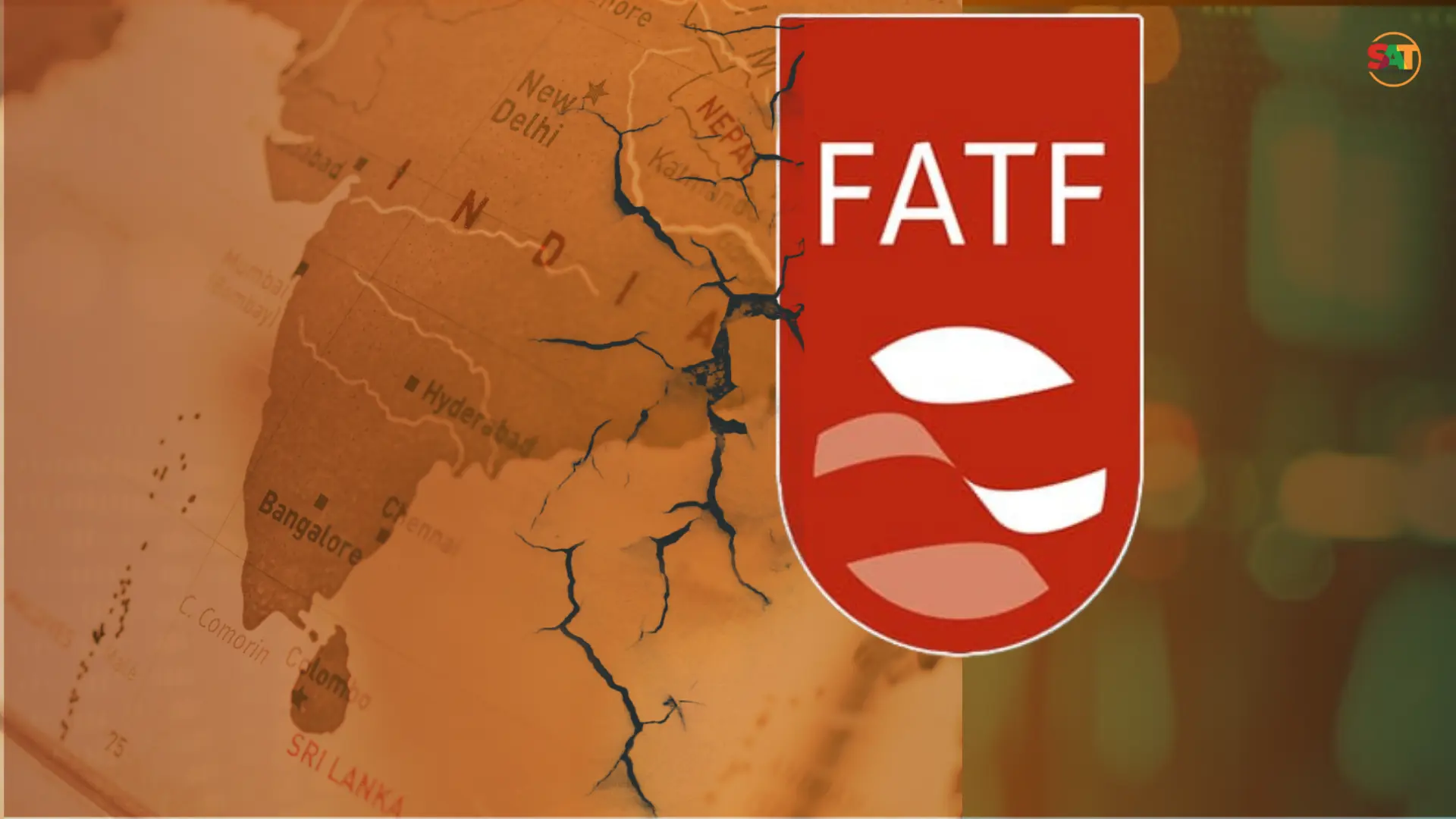The 19th April 2024 Israeli airstrike on Iran isn’t just another flare-up in a long-standing conflict. It’s a gasoline can lobbed onto a bonfire of tensions that have been simmering for months – to be more specific since the beginning of the Gaza War. This latest escalation that follows a series of tit-for-tat actions between the two nations, pushes the already volatile region precariously close to a full-blown war, a war that could erupt with devastating consequences.
Imagine a domino effect – a crippling blow to global oil supplies, a cascade of instability that engulfs neighboring countries, Iran’s use of proxies, and the Middle East left in ruins. The potential human cost is staggering, with civilian casualties mounting and entire regions plunged into chaos.
Here, it is essential to consider the incidents since the start of the Gaza War that resulted into crisis escalation.
A Timeline of Rising Tensions
- October 17, 2023: Following the devastating war between Israel and Hamas in Gaza, Iran, a staunch supporter of Hamas, warned of “preemptive measures” against Israel if it continued its offensive. “Al Jazeera reported this statement after a meeting between Iranian Foreign Minister Hossein Amirabdollahian and Hezbollah leader Hassan Nasrallah, signaling a potential coordinated response from the “axis of resistance,” a network of Iranian-backed groups in the region.
- December 18, 2023: A cyberattack, allegedly orchestrated by an Israeli group, disrupted operations at nearly 70% of Iran’s gas stations. This marked a significant escalation in the cyber dimension of the conflict.
- December 25, 2023: An Israeli airstrike in Syria killed a top Iranian general, further straining relations between the two countries.
- January 15, 2024: Iran retaliated by launching ballistic missiles at a facility in northern Iraq that it claimed was an Israeli intelligence outpost.
- Early 2024: A series of attacks and accusations followed, including suspected Israeli airstrikes on Iranian targets in Syria and Iran blaming Israel for explosions on its gas pipeline.
- April 1, 2024: A suspected Israeli airstrike destroyed the Iranian consulate in Damascus, killing several Iranian officials. This attack was seen as a major turning point, prompting Iranian vows of retaliation.
- April 13, 2024: Iran launched hundreds of missiles and drones at Israel in its first-ever direct attack. “ABC News: [invalid URL removed]” reported it was a barrage of over 300 projectiles, most of which were intercepted by Israel’s sophisticated air defense systems, supported by the US and its allies. Iran also seized a ship linked to an Israeli billionaire.
- April 19, 2024: Israel reportedly launched an airstrike on a military base near Iran’s central city of Isfahan. The details of the attack remain unclear, but it highlights the increasing risk of direct confrontation.
![A satellite image from Planet Labs shows Iran's nuclear site in Isfahan [Planet Labs Image via AP Images]](https://southasiatimes.org/wp-content/uploads/2024/04/download-3-1024x960.webp)
Iran’s Proxy Strategy in Play
Throughout this period, Iran has relied heavily on its network of proxies in the region, such as Hezbollah in Lebanon and the Houthi rebels in Yemen, to pressure Israel.
Additionally, with Pakistan’s recent ban on Zanebyoun, there is speculation that the potential involvement of Zanibyoun and Fatemyoun may have also been considered.
These groups have attacked Israeli targets and disrupted maritime traffic in the Red Sea. While this strategy allows Iran to avoid direct responsibility, it also risks drawing its allies into a wider conflict.
Potential Impacts of a Wider Conflict
The current escalation has severe ramifications for the region and the world:
- Regional Conflict: A full-blown war between Israel and Iran could have devastating consequences. The entire Middle East could be engulfed in violence, leading to widespread destruction and loss of life. The conflict could also destabilize fragile states and empower extremist groups.
- Global Oil Prices: The Middle East is a critical source of oil for the global economy. Any disruption to oil production or transportation routes due to the conflict could trigger a surge in energy prices, impacting economies worldwide.
- Maritime Trade: The Strait of Hormuz, a critical chokepoint for global oil transportation, could be affected. This could disrupt the global supply chains and raise shipping costs.
- South Asia: The conflict could have a ripple effect on South Asia, particularly neighboring Afghanistan and Pakistan. Both nations are already grappling with political instability and economic challenges. A wider regional conflict could further destabilize the region and lead to an increase in extremism and terrorism.
- China and Russia: China and Russia, major players in the region, have significant economic and strategic interests. While both have called for de-escalation, their involvement could complicate the situation if they choose to back either side.
Also Read: Dynamics of Four-Sided Saga in Asia-Pacific Region
Diplomatic Efforts Amidst Iran-Israel Conflict
Against this backdrop of escalating tensions, diplomatic efforts to mitigate conflict have taken center stage:
“It is high time to stop the dangerous cycle of retaliation,” emphasized United Nations Secretary-General Antonio Guterres, echoing concerns over the spiraling conflict. “The international community must work together to prevent further escalation and avert the devastating consequences of a full-scale regional conflict.”
At the G7 meeting in Capri, Italian Foreign Minister Antonio Tajani underscored the importance of international cooperation in de-escalating tensions. “The G7’s focus is on de-escalation,” remarked United States Secretary of State Antony Blinken, emphasizing the imperative of diplomatic engagement. While the United States received “last-minute” information from Israel regarding the reported attack on Iran, Blinken reiterated the U.S.’s commitment to avoiding offensive operations.
![U.S. Secretary of States Antony Blinken meets journalists during a press conference at the G7 Foreign Ministers Meeting on Capri Island, Italy, Friday, 19 April 2024 [AP Images]](https://southasiatimes.org/wp-content/uploads/2024/04/download-2-1024x960.webp)
Iran-Israel Conflict: Looking Ahead – Questions Remain!
The recent attack on Iran raises several critical questions:
- Will Iran launch a further, more significant attack on Israel?
- Can the international community broker a ceasefire and prevent a wider conflict?
- What role will China and Russia play in the ongoing crisis?
- How will the conflict impact the global economy and energy security?
- What will be the long-term consequences for the Middle East and South Asia?
Moreover, there arises the significant concern that Iran’s recent deployment of ‘known weaponry’ in its retaliatory strikes against Israel on 13th April 2024 might have been aimed at assessing and potentially recalibrating its adversary’s defense mechanisms.
This potential strategic move by Iran could signify a meticulous evaluation of Israeli responses, potentially leading to a more robust and calculated approach from Tehran in future engagements that might follow after today’s direct Israeli attack on Iran. This highlights the complex dynamics at play and underscores the critical need for diplomatic initiatives aimed at de-escalation to prevent further escalation and instability in the region.
Also Read: Iran-Israel Dynamics: The Middle East Mayhem
Hence the escalating crisis between Israel and Iran presents a nightmarish scenario for the region and the world. While diplomatic efforts are underway, their success rests on a precarious foundation.
As the situation remains highly volatile, and only time will tell how this latest escalation will unfold.
However, the questions above highlight the potential for a wider conflict with far-reaching consequences. Continued diplomatic efforts and international cooperation are crucial to prevent further escalation and find a peaceful resolution.
For this, addressing the root causes of the Israel-Iran conflict, the historical trajectory of the conflict, and strategic competition will be no easy feat. Containing the dangerous cycle of retaliation, where each attack sparks a stronger response, is equally crucial. Failure to do so could ignite a war with far-reaching consequences. The key question remains: Can the international community act fast enough to prevent the Middle East from becoming a tinderbox of regional conflict, or will a single spark trigger an inferno that consumes the entire region? The answer will determine the fate of millions and the stability of a critical part of the world.
Your go-to editorial hub for policy perspectives and informed analysis on pressing regional and global issues.

![As per Iranian state media, Iran deployed air defense batteries, shooting down three drones over Isfahan amid escalating tensions post-retaliatory strike on Israel [Al Jazeera].](https://southasiatimes.org/wp-content/uploads/2024/04/2024-04-19T115955Z_1359815626_RC2N97A3WZN2_RTRMADP_3_ISRAEL-PALESTINIANS-IRAN-1713533481.webp)


![India's Chabahar Port deal with Iran strains US ties [Image via Al jazeera].](https://southasiatimes.org/wp-content/uploads/2024/05/d81483c851b346e781728c0251224343_18-150x150.webp)
Add a Comment